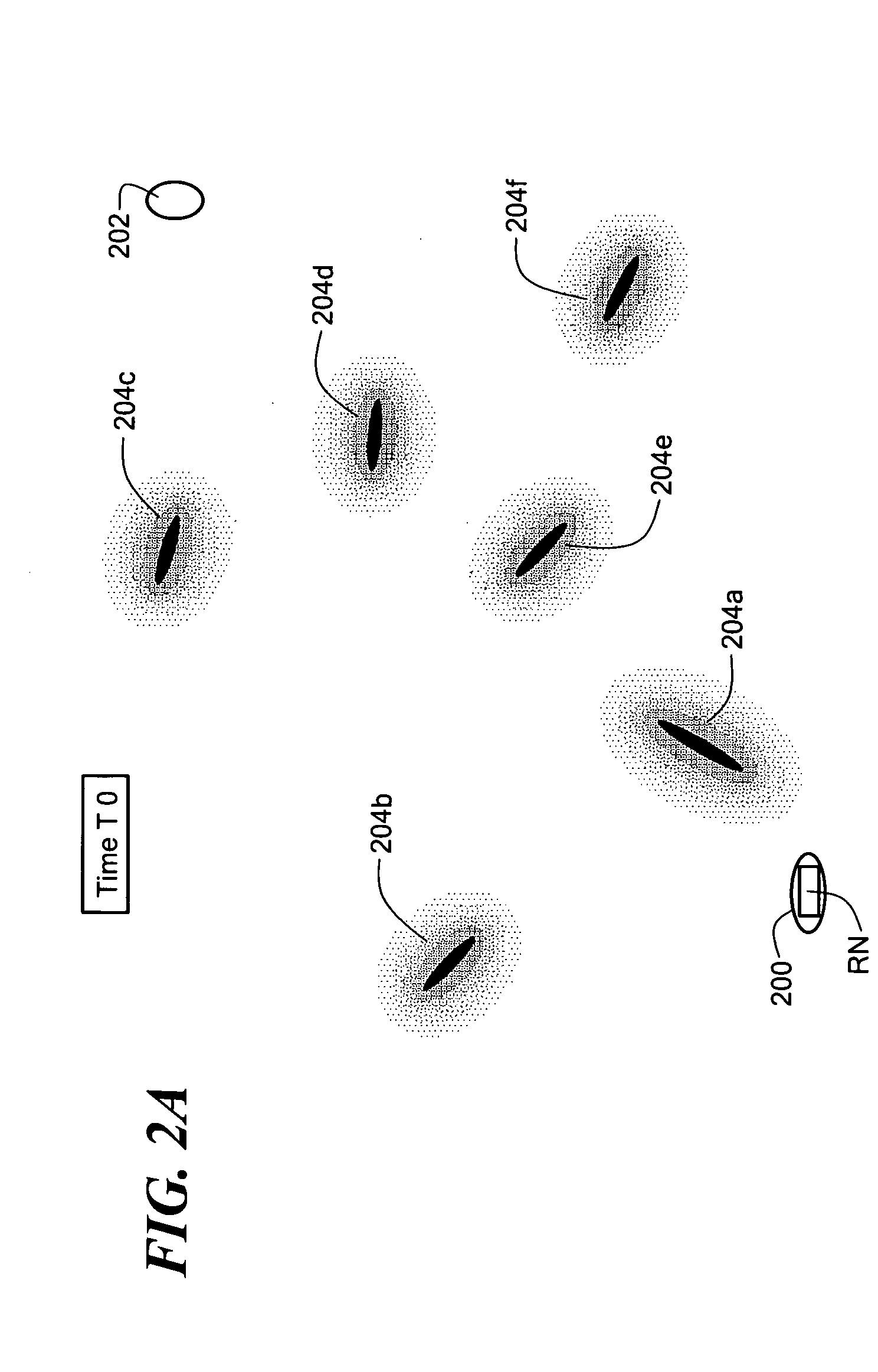System and method for adaptive path planning
a path planning and adaptive technology, applied in the field of path planning, can solve the problem that vehicles may only have probabilistic information about their environment, and achieve the effect of little overhead
- Summary
- Abstract
- Description
- Claims
- Application Information
AI Technical Summary
Benefits of technology
Problems solved by technology
Method used
Image
Examples
example
[0059] Let Π denote a space of probability distributions over the state space Σ. In order to determine a path, or a selection of paths, from the vehicle's current position to the goal, one builds a particular type of search tree T in Π. Generally, the nodes in the search tree T are points in the state space Π and edges in T are curves in Π.
[0060] The process of adding nodes to the tree T can be referred to as tree extensions. Suppose one is given an existing node n in search tree T and a curve α in probability distribution space with the curve α starting at the location of n. Then the search tree T is extended by the curve α by placing a node np at the endpoint of the curve α and adding the curve α to the tree space T. In this case, one may also say that the node n has been extended. If a node is not to be extended, the node is considered dead. One may also refer to tree extension by adding a turn or curve.
[0061] The tree can be built by starting the tree T by setting the root nod...
PUM
 Login to View More
Login to View More Abstract
Description
Claims
Application Information
 Login to View More
Login to View More - R&D
- Intellectual Property
- Life Sciences
- Materials
- Tech Scout
- Unparalleled Data Quality
- Higher Quality Content
- 60% Fewer Hallucinations
Browse by: Latest US Patents, China's latest patents, Technical Efficacy Thesaurus, Application Domain, Technology Topic, Popular Technical Reports.
© 2025 PatSnap. All rights reserved.Legal|Privacy policy|Modern Slavery Act Transparency Statement|Sitemap|About US| Contact US: help@patsnap.com



